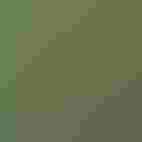Orchard Oriole
At a Glance
Most common in the Midwest and South is this small oriole. It favors open areas with scattered groves of trees, so human activities may have helped it in some areas, opening up the eastern woodlands and planting groves of trees on the prairies. Orchard Orioles often gather in flocks during migration. The black-throated young male, sitting alone in a treetop and singing his jumbled song, is often confusing to beginning birders.
All bird guide text and rangemaps adapted from Lives of North American Birds by Kenn Kaufman© 1996, used by permission of Houghton Mifflin Harcourt Publishing Company. All rights reserved.
Category
Blackbirds and Orioles, Perching Birds
IUCN Status
Least Concern
Habitat
Fields, Meadows, and Grasslands, Forests and Woodlands, Shrublands, Savannas, and Thickets, Urban and Suburban Habitats
Region
California, Eastern Canada, Florida, Great Lakes, Mid Atlantic, New England, Plains, Rocky Mountains, Southeast, Southwest, Texas, Western Canada
Behavior
Direct Flight, Flitter
Population
12.000.000
Range & Identification
Migration & Range Maps
Migrates in flocks; many move north across the Gulf of Mexico in spring. Fall migration begins very early, with some southbound by late July.
Description
7" (18 cm). Smaller than Baltimore Oriole. Black and chestnut adult male unmistakable. Female is small, all yellow-green. Lacks orange tone of female Baltimore and Bullock's Orioles; shorter bill than Hooded Oriole. One-year-old male is like female but with black throat.
Size
About the size of a Robin, About the size of a Sparrow
Color
Black, Green, Orange, Red, White, Yellow
Wing Shape
Rounded
Tail Shape
Rounded, Square-tipped
Songs and Calls
A rapid musical warble, somewhat like that of Purple Finch, but not as rich in quality.
Call Pattern
Complex, Falling, Undulating
Call Type
Chirp/Chip, Flute, Whistle
Habitat
Wood edges, orchards, shade trees. Breeds in semi-open habitats with deciduous trees and open space, including riverside trees, orchards, suburbs, forest edges and clearings, prairie groves. Usually avoids unbroken forest. Winters in brushy areas and woodland edges in lowlands of the tropics.
Sign up for Audubon's newsletter to learn more about birds like the Orchard Oriole
Behavior
Eggs
4-5, sometimes 3-7. Pale bluish white, blotched with brown, gray, purple. Incubation is probably mostly or entirely by the female, about 12-15 days; reportedly, the male may feed the female during incubation.
Young
Both parents feed the nestlings. Young leave the nest about 11-14 days after hatching, may remain with one or both parents for several weeks. 1 brood per year.
Feeding Behavior
Forages mostly by searching for insects among the foliage of trees and bushes. Regularly visits flowers, probing in the blossoms with its bill. In winter in the tropics, often forages in flocks.
Diet
Mostly insects, some berries and nectar. Diet in summer is mostly insects, especially caterpillars, beetles, and grasshoppers, plus many others, also spiders. Eats some berries, perhaps more in fall and winter. Often feeds on nectar, and may eat parts of flowers.
Nesting
Male sings in spring to attract a mate. Often not strongly territorial; in some cases, more than one pair may nest in the same tree. Also sometimes nests in the same tree with Eastern Kingbirds. Nest site is in tree (usually deciduous) or tall shrub, rarely in tall dense marsh growth. Often 10-20' above ground, can be much lower or higher (3-70' up); typically placed in fork of horizontal branch, sometimes in clump of Spanish moss or other site. Nest (built by female, possibly with help from male) is a hanging pouch or basket, not as deep as some oriole nests, woven of grass and plant fibers, lined with fine grass and plant down.
Conservation
Conservation Status
In recent decades, has decreased in many parts of range but has increased in some regions, such as northern Great Plains.
Climate Threats Facing the Orchard Oriole
Choose a temperature scenario below to see which threats will affect this species as warming increases. The same climate change-driven threats that put birds at risk will affect other wildlife and people, too.













